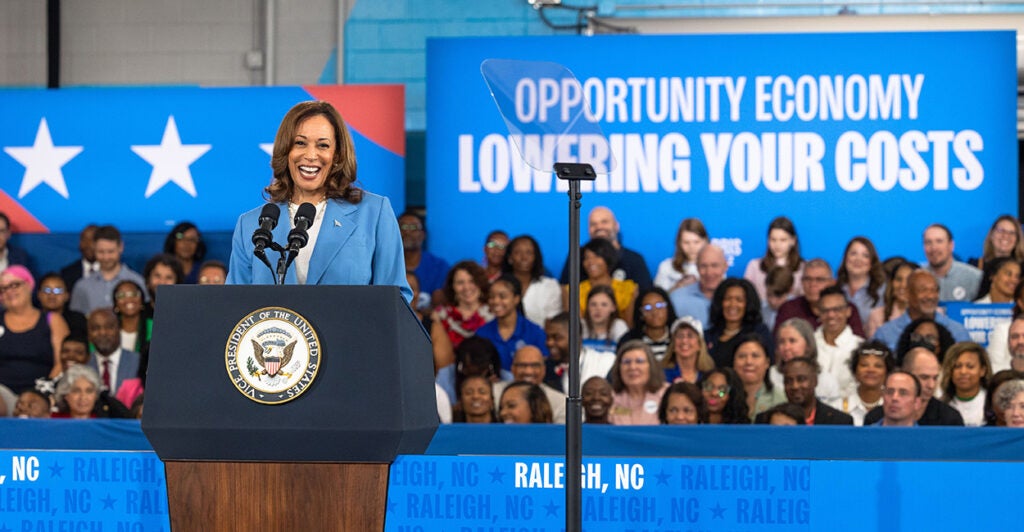Editor’s note: This is a lightly edited transcript of the accompanying video from professor Peter St. Onge.
How would Donald Trump and Kamala Harris do inflation differently?
With her brain-dead price controls, Kamala is finally fleshing out an economic plan.
So far it’s pretty bad: more spending, taxes, mandates, amnesty, subsidies for the rich, and price controls to empty the shelves.
Meanwhile, as in his first term, Trump focuses on reducing costs on production—cutting taxes, cutting overregulation and mandates. And, of course: Drill, baby, drill.
There are, to be fair, two points of overlap: spending and tariffs.
In a recent video, I mentioned Trump’s spending has been about average for recent presidents, while President Joe Biden has doubled that between program increases and boondoggles like Build Back Better.
Kamala doesn’t have a record to run on, but so far she’s to the left of Biden on every economic issue—she wants to repeal all Trump tax cuts, not, like Biden, just those for Americans making above $400,000. And she’s promised to ban all fracking, not just on public lands like Biden. And, of course, price controls.
So it’s probably fair to assume Kamala would be worse on spending than Biden, who spent twice what Trump spent.
And then there’s tariffs.
When he was president, Trump put tariffs on roughly $380 billion worth of Chinese goods. While mainstream economists predicted Armageddon, a subsequent study found 80% of those tariffs were actually paid by China—Beijing reimbursed exporters, kindly paying our taxes for us.
What’s left had a negligible impact on inflation: During the height of the tariffs in 2018 and 2019, inflation was 1.5%. It continued at that level until Biden took office in 2021.
Moreover, Biden kept most of the Trump tariffs and, given tariffs are bought by industry lobbyists, it’s a safe bet Kamala would keep them too.
Having said that, Trump now is promising much higher tariffs—up to 60% against China and 10% tariffs on every other country. China may not be able to reimburse its exporters 80% again—it’s too much money. Nor would Mexico.
So we could be looking at something like $500 billion in additional costs to American consumers—about 2% in inflation terms. And for perspective, about the same as Trump would save if he cuts energy costs in half with more drilling, as he is promising.
Of course, keep in mind the $500 billion isn’t pure cost: It reduces imports by several hundred billion, creating several hundred thousand jobs.
Moreover, that $500 billion is new government revenue that could also, as Trump has promised, pay for cuts to income taxes—no tax on tips, no tax on Social Security—or more across-the-board cuts.
Considering income taxes are much worse, economically—income taxes punish production—you actually could end up with lower inflation with tariffs.
So what’s next? The media will obsess on tariffs because it’s all they’ve got.
But tariffs pale in comparison to government spending and overregulation—estimates peg over-regulation as spurring at least 20% of inflation—four-plus trillion a year.
And, unlike tariffs, government mandates don’t buy you jobs; they destroy jobs.
Finally, the big kahuna: government spending. Biden’s spending orgy bought us not 2% inflation but 20% inflation in three short years. If Kamala Harris the president is as left wing as Kamala the candidate, she’ll easily top that.
We publish a variety of perspectives. Nothing written here is to be construed as representing the views of The Daily Signal.
